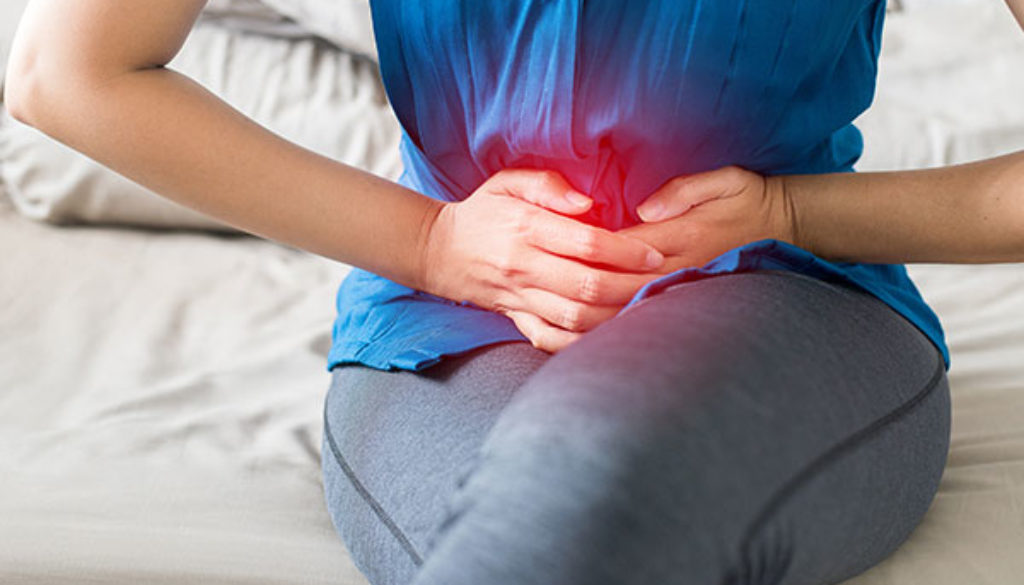The many myths about menstrual disorders
Jane, 30, suffered from excessive bleeding for some time before she was diagnosed with menstrual disorder in a hospital. She said before she began treatment, the illness affected her daily activities. A consultant gynaecologist with the Central Hospital Benin, Dr. Victor Ohenhen, described menstrual disorders as problems related to a woman’s normal menstrual cycle which […]

Jane, 30, suffered from excessive bleeding for some time before she was diagnosed with menstrual disorder in a hospital.
She said before she began treatment, the illness affected her daily activities.
A consultant gynaecologist with the Central Hospital Benin, Dr. Victor Ohenhen, described menstrual disorders as problems related to a woman’s normal menstrual cycle which are one of the most common presentations in the gynaecology clinic.
He said menstrual disorders and their symptoms could disrupt a woman’s daily life, and also affect the ability to get pregnant.
He listed the type of menstrual disorders to include, abnormal uterine bleeding which is excessive or prolonged menstrual bleeding, and amenorrhea which is the absence of menstrual bleeding.
Others are Oligomenorrhea which is light or infrequent menstruation, premenstrual syndrome (PMS) which is the physical and emotional discomfort before menstruation as well as Premenstrual dysphonic disorder (PMDD) which is severe physical and emotional discomfort before menstruation.
Dr. Ohenhen, who is also the Chairman, Medical and Delta Consultants Association of Nigeria (MDCAN), Edo State Hospital Management Board chapter, said one of the myths associated with the disorder is that one cannot get pregnant during a period.
He said, “Many women have cycles that last 21 or even 35 days, and this can result in early or late ovulation. If your period is regular and your monthly cycle lasts between 28 and 30 days, then it is unlikely that you can get pregnant from unprotected sex on the first two days of your period.
“However, it is still a possibility, as the sperm can live inside for up to 5 days and sometimes, there may be early ovulation. This can lead to pregnancy.”
He said another myth is that exercise is bad for one during a menstrual period, noting that studies have shown that exercise reduces the symptoms of Premenstrual Syndrome (PMS), relieves menstrual cramps and also influences period flow and duration.
“Another myth is that one loses a lot of blood during the menstrual period but contrary to what people think, one loses only about 80ml of blood in total during a period,” he said.
He explained that it is only during heavy menstrual bleeding that one loses more than 80ml of blood or bleeds for more than a week.
Dr. Ohenhen also said the myth that period blood is unclean blood is not true as blood coming out of the vagina during a period is the same as blood coming out of any other body part.
Menstrual blood is a mixture of mucus, tissue and blood cells from the uterine lining (endometrium). There is nothing unclean or dirty about it.
“Premenstrual syndrome is very real. Before the onset of menstruation, estrogen levels drop, and progesterone levels rise. These hormonal changes make a woman moody or emotional. It can also cause bloating, acne, constipation, diarrhoea, food cravings, backaches or headaches”, he said.
To prevent the disorder, Dr Ohenhen advocates a healthy lifestyle by exercising moderately and eating nutritious foods, getting enough rest, practising stress reduction and relaxation techniques.
Others are the use of birth control pills or other contraceptive methods, changing tampons or sanitary pads approximately every four to six hours to prevent infections.
“Also, if you are an athlete, cut back on prolonged or intense exercise routines. Excessive sports activities can cause irregular periods,” he advised.
According to him, to treat the disorder, investigations are often required to diagnose any underlying cause responsible for the symptoms. He said treatment for the disorder includes the use of Anti-inflammatory (NSAIDs) and non-hormonal tablets, use of birth control pills, and surgery among others depending on the disorder.
He said, “Most common investigations are done by transvaginal pelvic ultrasound, although sometimes blood tests may be required.
“In abnormal uterine bleeding, Anti-inflammatory (NSAIDs) and non-hormonal tablets can be used. Birth control pills can help to regulate menstrual bleeding.
“You can address other hormonal factors using the intrauterine system which releases a small amount of hormone into the womb lining.”
Dr Ohenhen said other methods of treatment are surgical procedures to address underlying problems, such as endometrial ablation to remove the uterine lining, myomectomy to remove fibroids (both of which may affect fertility) or as a last resort, a hysterectomy, to remove the womb.
“For dysmenorrhea, over-the-counter painkillers can help; birth control pills can also help sometimes to reduce menstrual cramps.
“Mild exercise can help too as well as other lifestyle interventions. The intrauterine system may be useful, depending on the cause. Surgery may also be an option, and this is most often performed by laparoscopy,” he added.
He said treatment for Premenstrual dysphonic disorder (PMDD) requires specialist treatment and may involve anti-depressants or hormonal treatments being prescribed while Premenstrual Syndrome (PMS) can benefit from exercise and dietary choices, such as reducing caffeine and alcohol intake.
“Involvement of a multidisciplinary team is often helpful so that different strategies can be considered,” he said.
He advised that bleeding after sex (post-coital bleeding), in between periods (inter-menstrual bleeding) or after menopause (postmenopausal bleeding) need to be urgently investigated and requires seeing a gynaecologist.
